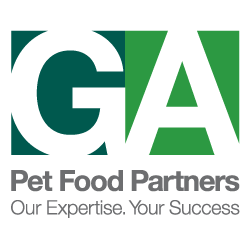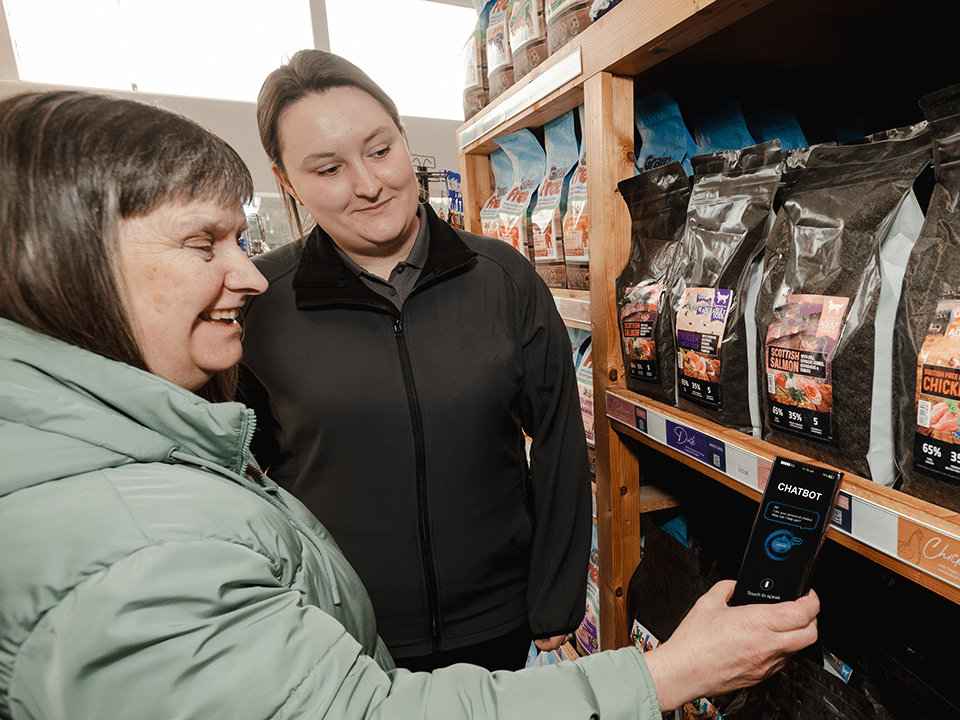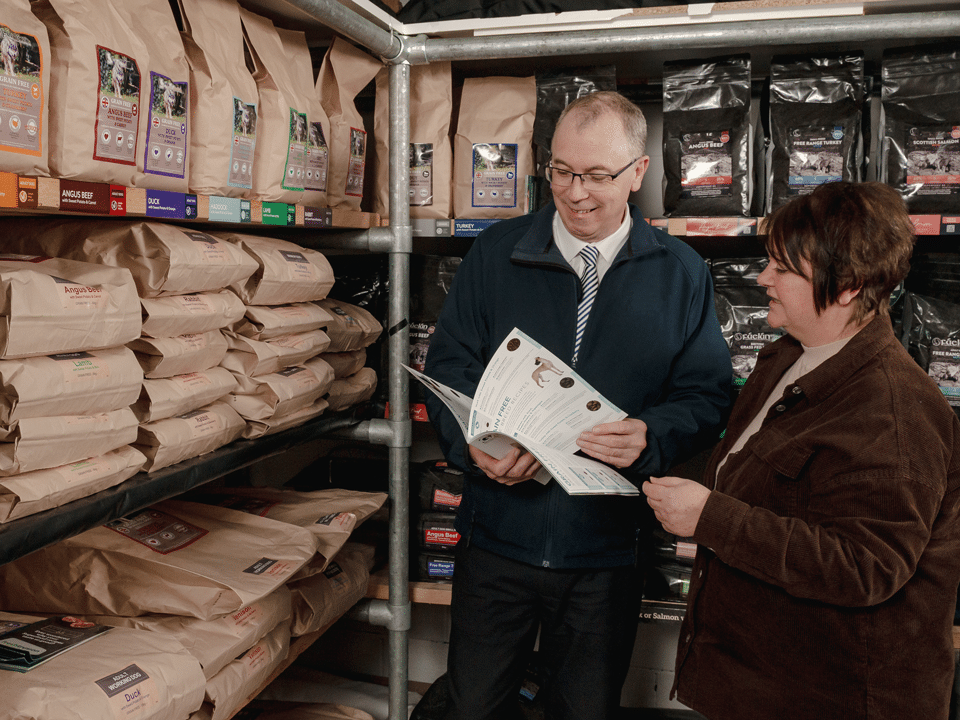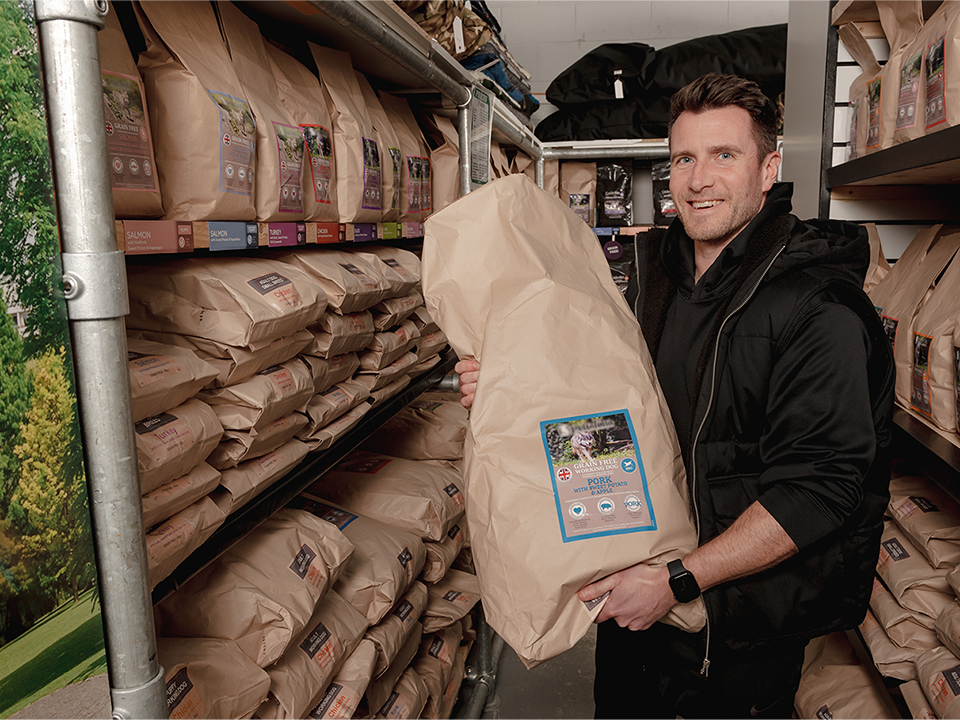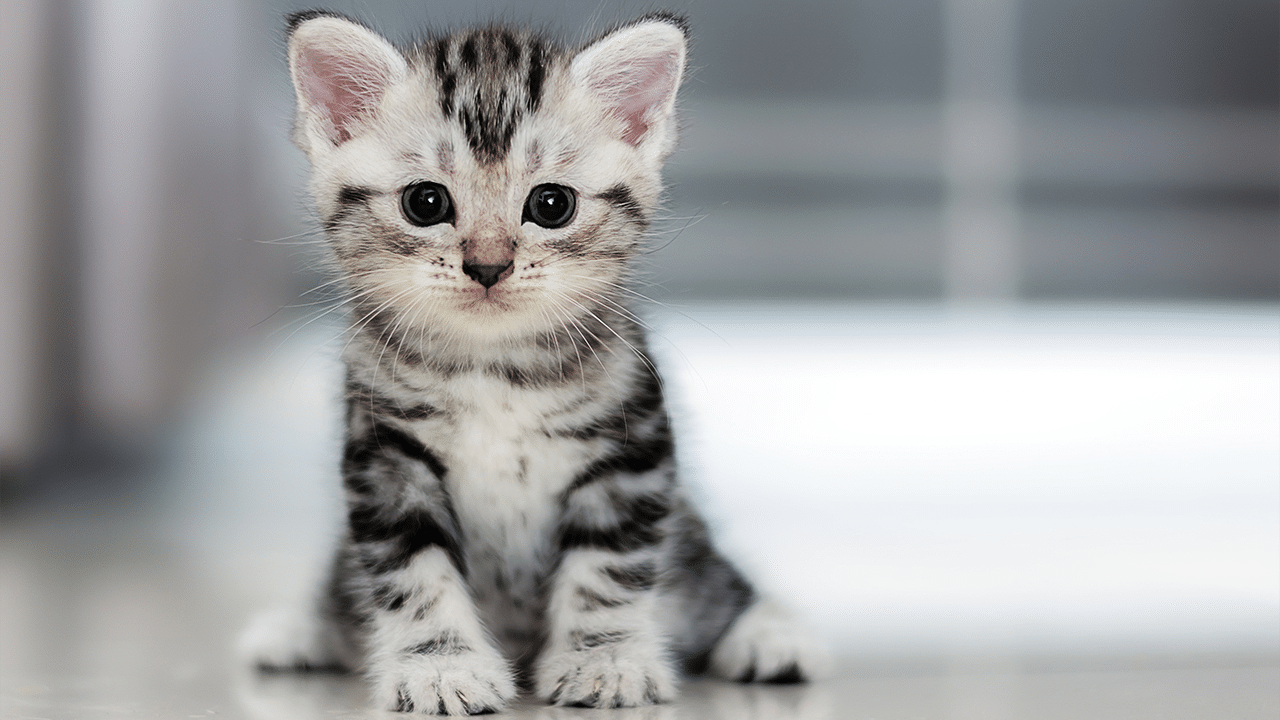
Do kittens require a specific diet?
Kittens have a lot of growing to do in a short amount of time, as they are generally considered to be fully grown by 8-12 months old. As kittens are growing and developing rapidly, they have different nutritional requirements to adult cats. Therefore it’s essential to ensure their specific dietary needs are being met to support healthy growth. Feeding an adult diet too early can impact their development and lead to long term problems throughout life.
For the first few weeks after birth, kittens will rely on their mothers’ milk to gain their essential nutrition. However, around weeks 3-4, a kitten’s nutritional requirements begin to change. Their mother’s milk production naturally lessens while the kittens’ ability to digest lactose also decreases. From this point, it is important to begin the weaning process to gradually introduce a fully balanced and complete kitten diet specially designed to meet kittens’ nutritional needs.
Protein for Growth
As carnivores, cats naturally require a significantly higher level of protein than dogs. Kittens, however, require even more protein than their adult counterparts, with a minimum recommended level of 28g/100g dry matter (DM) during growth, which subsequently drops to a minimum requirement of 25g/100g DM during adult maintenance1.
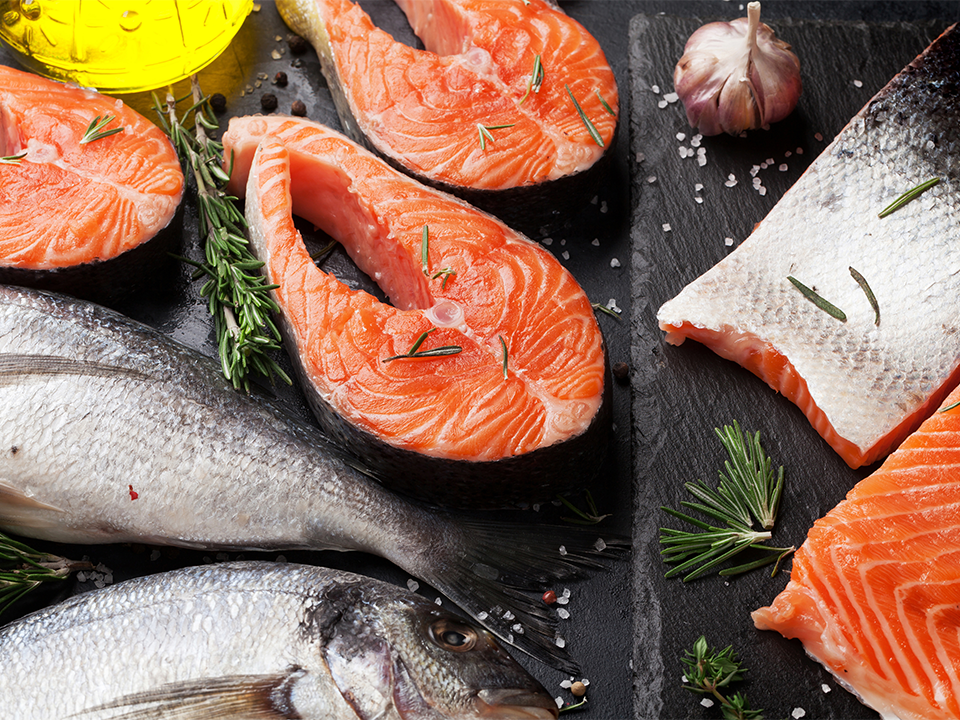
Proteins are composed of amino acids, which are important building blocks of muscle, skin, hair, skeleton, and other tissues in the body. Along with a higher protein requirement, kittens also have a higher requirement for a number of essential amino acids compared with adult cats. Studies have shown that a deficiency in essential amino acids caused kittens to lose weight2, which of course, is unfavourable during growth. This is because essential amino acids cannot be synthesised by the animal and therefore must be present in the diet. Conversely, it has also been shown that excessive arginine, methionine and tryptophan levels can lead to a decrease in growth rate and food intake3,4. Therefore, these nutrients have maximum nutritional levels (arginine 3.5g/100g DM, methionine 1.4g/100g DM, tryptophan 1.7g/100g DM)1 to support growth.
Kittens (and adult cats) cannot synthesise taurine from other amino acids and so it must be provided in the diet to ensure healthy growth and normal neuronal and visual development.
Essential Fatty Acids for Essential Development
Dietary fats deliver the most concentrated energy source in a balanced diet for kittens, helping to meet their increased energy demands during rapid growth effectively. As well as providing energy, sources of fat within the diet also supply essential fatty acids (EFAs). The essential nature of fatty acid is primarily due to the inability of an animal to synthesize sufficient quantities in the body to meet its needs, which is why they must be present in the diet. However, EFAs also possess important functional and structural characteristics that play a vital role in supporting healthy development and function of the body, which also contribute to their essential nature.5
For kittens/cats, as for other mammals, the essential fatty acids belong to the omega-3 and omega-6 families.
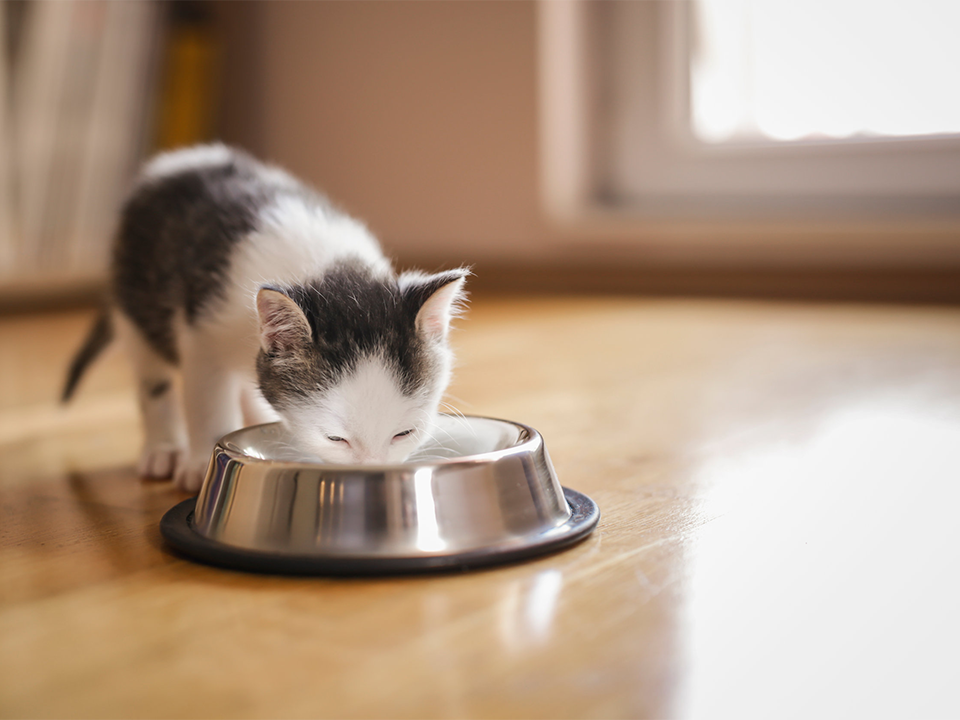
Omega-6 EFAs
The Omega-6 EFAs are linoleic acid (LA) and arachidonic acid (AA). LA is typically found in plant-based ingredients (e.g. corn oil, safflower seed oil), whereas AA is most commonly seen in animal fats 6. Both LA and AA are essential components of cell membranes, functioning to maintain membrane stability and fluidity. Unlike dogs, cats have a limited ability to convert LA to AA and therefore require a diet that can provide them with both of these fatty acids to prevent deficiency.
In the absence of dietary LA and AA, signs of deficiency in kittens include lethargy, retarded growth, rough, dry coats with dandruff and skin lesions 7. Supplementation of an EFA deficient diet with safflower seed oil (as a source of LA) was able to prevent the development of poor skin and coat condition and loss of water through the skin, with the negligible conversion of LA to AA demonstrating specific functions of LA as an EFA independent of AA 8.
Further studies in cats fed diets containing adequate LA but deficient in AA showed reproductive failure and impaired platelet aggregation, which could be treated by the addition of AA 9, 10. An important point to note is that the impact of nutrition on the development and health of a kitten begins before birth, and the importance of providing adequate levels of EFAs, especially AA, in the diet of the mother during gestation and lactation is highlighted. During reproduction and growth, a minimum level of 20 mg/100g DM is recommended which is significantly higher than the recommended level for adult cats (6 mg/100g DM)1.
These studies indicate that LA is essential for functions such as growth, lipid transport, normal skin and coat condition and maintenance of the epidermal permeability barrier, while AA is required for functions that depend on eicosanoid formation, such as reproduction and platelet aggregation 11.
Omega-3 EFAs
The Omega-3 EFAs are alpha-linolenic acid (ALA), eicosapentaenoic acid (EPA) and docosahexaenoic acid (DHA). EPA and DHA are generally found most abundantly in marine sources, such as algae and phytoplankton, as well as in fish that eat them, whereas ALA is found more in plant oils (e.g. flaxseed (linseed) oil, soybean oil) 6.
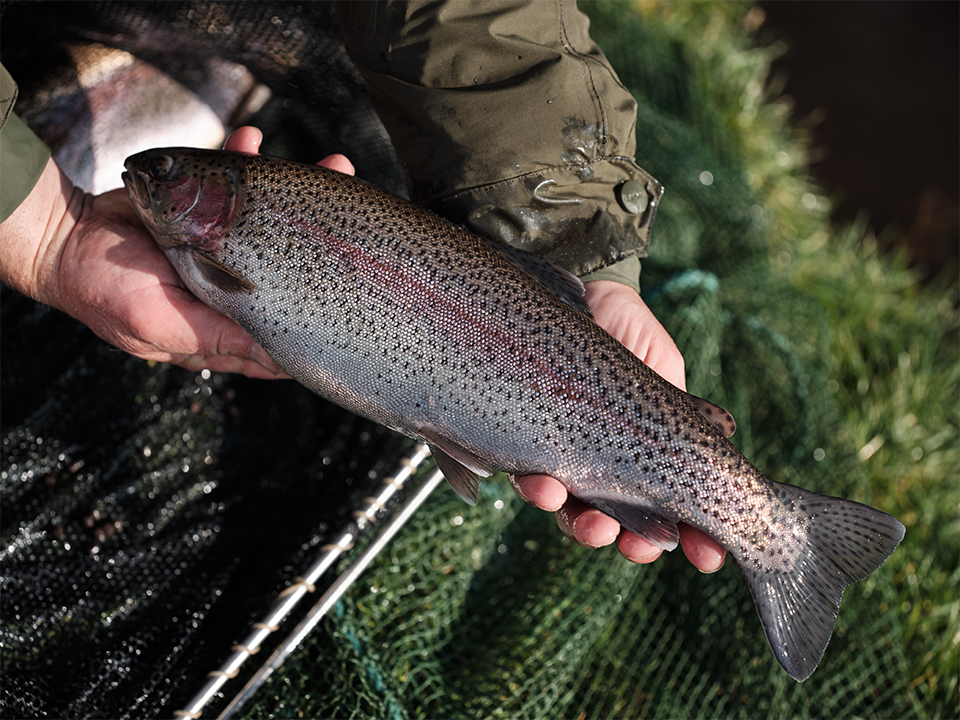
EPA is a precursor of DHA and can also be incorporated into cell membranes, from where it can be released and converted to eicosanoids, which play an important role in immune and inflammatory reactions. Importantly, the eicosanoids derived from EPA are different to those produced from AA and associated more with anti-inflammatory properties in contrast to the inflammatory properties of AA-derived eicosanoids12.
It is recognised that DHA is vital in supporting the proper development of the brain and retinal tissue13. Kittens from mothers fed relatively low levels of ALA (from corn oil) were able to convert ALA to EPA and DHA in the liver and accumulate higher levels of DHA in the brain and retinal tissue compared to the liver. However, the levels of ALA supplied in the maternal diet and subsequently to the kittens appeared to be less than optimal in terms of achieving levels of DHA to support the proper development of neural and visual development. Electroretinogram recordings, used as a measure of retinal and neuronal cells function, were impaired in kittens that were fed diets containing corn oil as the primary source of EFA (ALA) compared to kittens fed diets containing pre-formed DHA14. If DHA is deficient during early development, this can lead to a loss in neural performance and reduced visual acuity.
Since no dietary requirement for EPA and DHA in adult cats has been established, it is important to select a diet formulated for kittens to ensure that the minimum level of 0.01g/100g DM EPA+DHA is provided during the growth phase for kittens.1
Minerals and Vitamins
There is an abundance of minerals and vitamins that cats require to maintain their health. However, some of the most important during growth are calcium (Ca), phosphorus (P) and vitamin D, as these have a key role in skeletal development 15. Insufficient or unbalanced dietary provision of these nutrients can have severe negative health impacts leading to long term problems throughout the animal’s life.
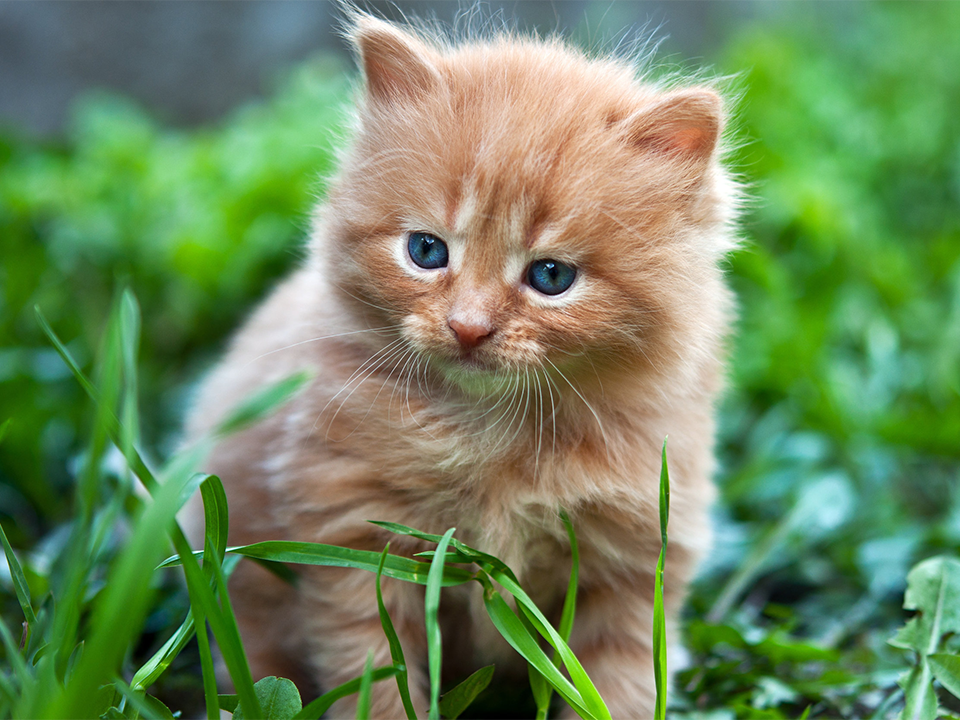
Kittens need more calcium and phosphorus than adult cats to support the growth and development of their bones and teeth. It’s recommended that kittens require a minimum of 1g/100g DM of Ca in their diet and 0.84g/100g DM of P, compared to adult cats that only need 0.4g/100g DM of Ca and 0.26g/100g DM of P once fully grown. Not only is the level of these minerals in the diet important, but also the ratio in which they are supplied. For kittens, it’s advised that this should be no higher than 1.5:1 (Ca:P) but can be increased to 2:1 in diets for adult cats 1.
Vitamin D is also an essential nutrient for cats as it works to ensure that the body absorbs sufficient levels of calcium and phosphorus. Kittens must receive a minimum of 28IU/100g DM in their diet, which is slightly more than the minimum requirement of adults at 25IU/100g DM 1. A deficiency in vitamin D or low levels of Ca and P can lead to fractures due to decreased mineralisation of bone and bone deformities (e.g. rickets), leading to painful long-term conditions.
References
- Nutritional Guidelines For Complete and Complementary Pet Food for Cats and Dogs. (2020).
- Rogers, Q.R. and Morris, J.G. (1979). Essentiality of amino acids for the growing kitten. The Journal of nutrition, 109(4), pp.718-723.
- Taylor, T.P., Morris, J.G., Kass, P.H. and Rogers, Q.R. (1997). Increasing dispensable amino acids in diets of kittens fed essential amino acids at or below their requirement increases the requirement for arginine. Amino Acids, 13(3-4), pp.257-272.
- Taylor, T.P., Morris, J.G., Kass, P.H. and Rogers, Q.R. (1998). Maximal growth occurs at a broad range of essential amino acids to total nitrogen ratios in kittens. Amino Acids, 15(3), pp.221-234.
- Bauer, J.J.E. (2008). Essential fatty acid metabolism in dogs and cats. Revista Brasileira de Zootecnia, 37(SPE), pp.20-27.
- Lenox, C.E. (2016). Role of dietary fatty acids in dogs & cats. Today’s Veterinary Practice Journal: ACVN Nutrition Notes, 6(5), pp.83-90.
- Sinclair, A.J., Slattery, W., McLean, J.G. and Monger, E.A. (1981) Essential fatty acid deficiency and evidence for arachidonate synthesis in the cat. Br J Nutr, 46, pp. 93-96.
- MacDonald, M.L., Rogers, Q.R. and Morris, J.G. (1983) Role of linoleate as an essential fatty acid for the cat independent of arachidonate synthesis. J Nutr, 113:1422-1433.
- MacDonald ML, Rogers QR, Morris JG, Cupps PT. (1984) Effects of linoleate and arachidonate deficiencies on reproduction and spermatogenesis in the cat. J Nutr. 114(4):719-26. DOI: 10.1093/Jn/114.4.719. PMID: 6716173.
- MacDonald ML, Rogers QR, Morris JG. (1984) Effects of dietary arachidonate deficiency on the aggregation of cat platelets. Comp Biochem Physiol C Comp Pharmacol Toxicol. 78(1):123-6. DOI: 10.1016/0742-8413(84)90057-4. PMID: 6146457.
- MacDonald, M.L., Anderson, B.C., Rogers, Q.R., Buffington, C.A. and Morris, J.G. (1984) Essential fatty acid requirements of cats: Pathology of essential fatty acid deficiency. Am J Vet Res, 45(7):1310-1317.
- Calder, P.C. (2012) Omega-3 polyunsaturated fatty acids and inflammatory processes: nutrition or pharmacology? Br J Clin Pharmacol, 75(3); 645-662.
- Biagi, G., Mordenti, A.L. and Cocchi, M. (2004). The role of dietary omega-3 and omega-6 essential fatty acids in the nutrition of dogs and cats: a review. Progress in Nutrition, 6, pp.97-107.
- Pawlosky, R.J., Denkins, Y., Ward, G. and Salem Jr, N. (1997). Retinal and brain accretion of long-chain polyunsaturated fatty acids in developing felines: the effects of corn oil-based maternal diets. The American journal of clinical nutrition, 65(2), pp.465-472.
- Stockman, J., Villaverde, C. and Corbee, R.J. (2021). Calcium, Phosphorus, and Vitamin D in Dogs and Cats: Beyond the Bones. Veterinary Clinics: Small Animal Practice, 51(3), pp.623-634.

Dr Adrian Hewson-Hughes
Nutrition, Food Safety and Innovation Advisor
Adrian graduated from the University of Sunderland with a BSc (Hons) in pharmacology and went on to work in a Multiple Sclerosis laboratory at the Institute of Neurology, University College London where he obtained a PhD. After several more years as a ‘postdoc’ in academia at the Universities of Cambridge and Nottingham, he joined Mars Petcare and spent 14 years working in R&D at the Waltham Centre for Pet Nutrition. Adrian led various research projects on palatability, feeding behaviour, nutrition and metabolism in both cats and dogs resulting in scientific publications, presentations and product innovations. In October 2018, Adrian joined GA, excited by the opportunity to support the continued innovation and investment that GA commits to, bringing the highest quality products to our Partners and our pets.
You may also like...
Article written by Dr. Adrian Hewson-Hughes
The pros and cons of AI in pet retail
You may have heard the letters "AI" or "AI Technology" frequently used in the media. From opening your phone with Face ID to interacting with [...]
